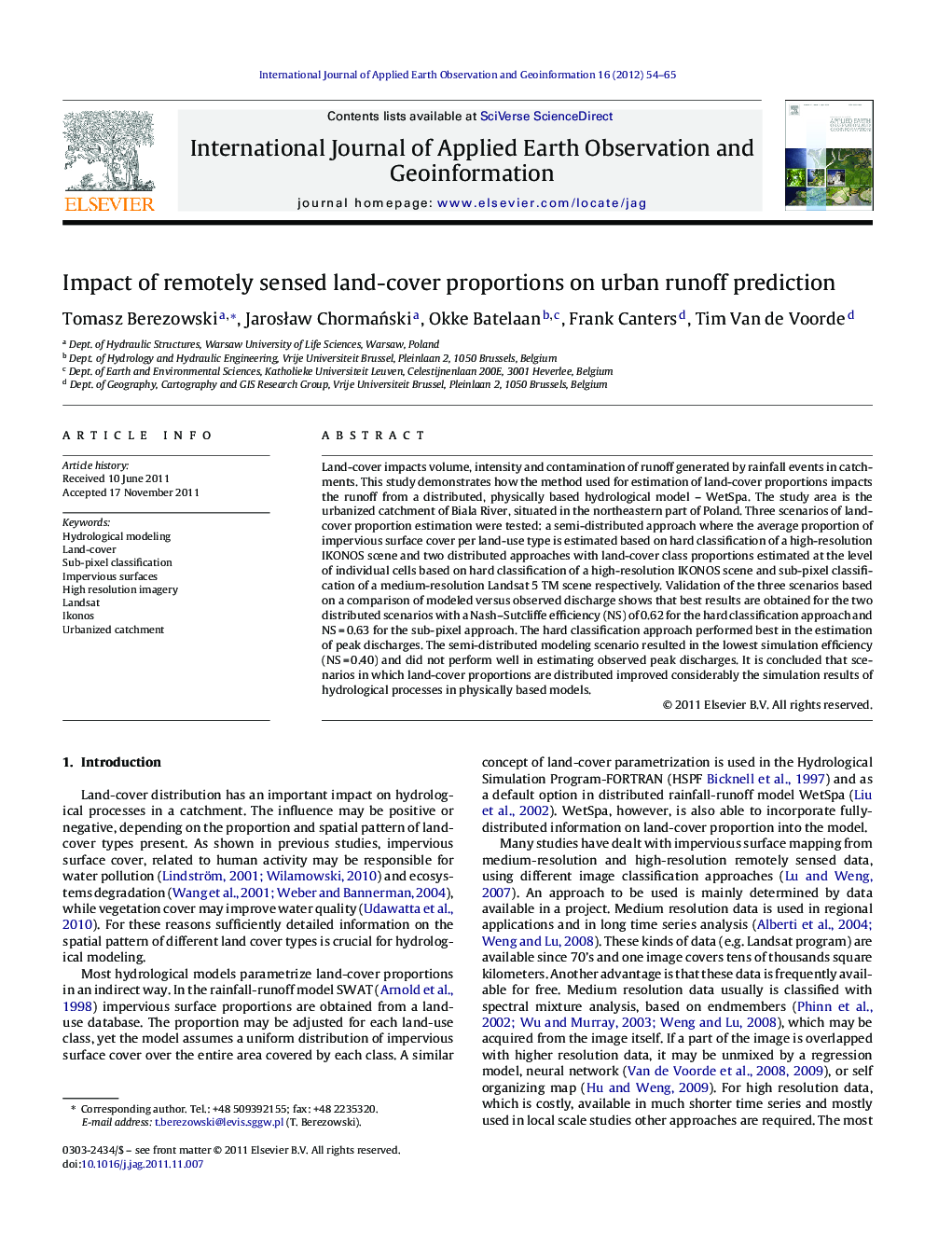| Article ID | Journal | Published Year | Pages | File Type |
|---|---|---|---|---|
| 4465007 | International Journal of Applied Earth Observation and Geoinformation | 2012 | 12 Pages |
Land-cover impacts volume, intensity and contamination of runoff generated by rainfall events in catchments. This study demonstrates how the method used for estimation of land-cover proportions impacts the runoff from a distributed, physically based hydrological model – WetSpa. The study area is the urbanized catchment of Biala River, situated in the northeastern part of Poland. Three scenarios of land-cover proportion estimation were tested: a semi-distributed approach where the average proportion of impervious surface cover per land-use type is estimated based on hard classification of a high-resolution IKONOS scene and two distributed approaches with land-cover class proportions estimated at the level of individual cells based on hard classification of a high-resolution IKONOS scene and sub-pixel classification of a medium-resolution Landsat 5 TM scene respectively. Validation of the three scenarios based on a comparison of modeled versus observed discharge shows that best results are obtained for the two distributed scenarios with a Nash–Sutcliffe efficiency (NS) of 0.62 for the hard classification approach and NS = 0.63 for the sub-pixel approach. The hard classification approach performed best in the estimation of peak discharges. The semi-distributed modeling scenario resulted in the lowest simulation efficiency (NS = 0.40) and did not perform well in estimating observed peak discharges. It is concluded that scenarios in which land-cover proportions are distributed improved considerably the simulation results of hydrological processes in physically based models.
► VHR remote sensing data leads to better prediction of peak discharges than medium-resolution. ► Land-use based estimation of land-cover proportions underestimates peak discharges in urban area. ► Hydraulic connectivity patterns are well reflected by VHR data.
